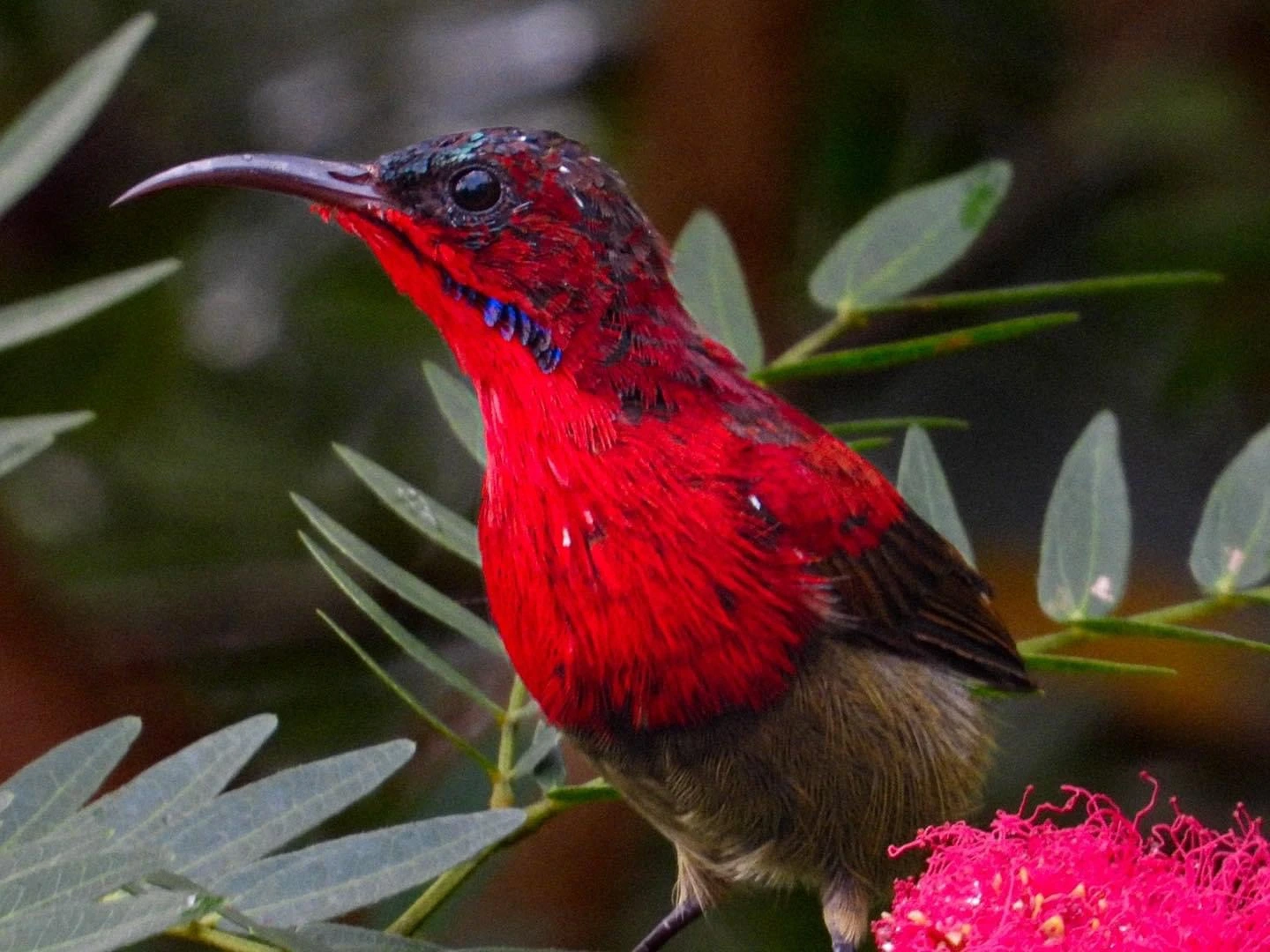I’ve always been torn between the worlds of writing and music, each feeding my soul in different, profound ways. As a musician and music enthusiast, there’s an indescribable rush that comes with attending live performances, a surge of adrenaline that’s hard to match. While many might guess that spectacles like Coachella or Tomorrowland would be my ultimate festival destinations, my heart leans toward the path less travelled. Thus, you can imagine the surge of excitement I felt as the dates for the Ziro Music Festival drew near.
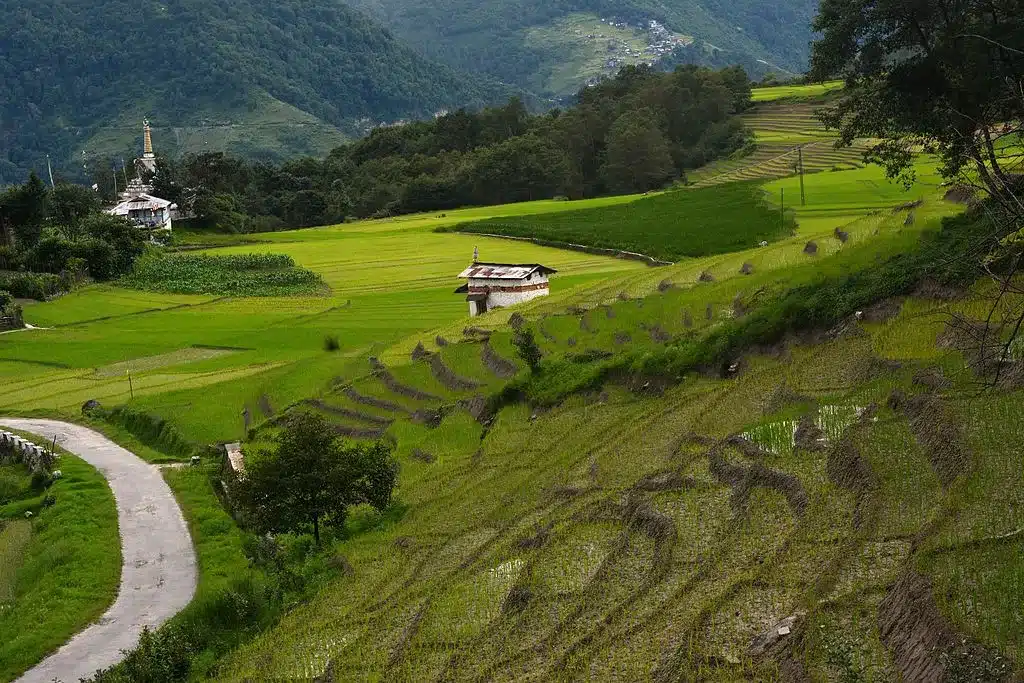
Ziro, set in the enchanting landscape of Arunachal Pradesh, stands out as one of India’s premier outdoor music events, celebrating the rich diversity of indigenous tribes and artists from Northeast India but also serves as a platform for the vibrant Indian and global independent music. Eager to immerse myself in this experience, I booked a cab with Savaari from Dibrugarh to Ziro. But as it turned out, the festival was merely the beginning of my adventure. A spontaneous detour whisked me away into the life of a mysterious local tribe. And let me tell you, that encounter with one of India’s most unique tribes—wasn’t just enlightening. It changed the way I see the world.
An unexpected adventure – From lush landscapes to cultural riches in Ziro
The journey from Dibrugarh to Ziro was like a painting coming to life—first, the lush tea gardens, then dense, mysterious forests, and finally the breathtaking valley below. The five-hour drive, enriched by stops for local delicacies like Bamboo Shoot Curry, Thenthik noodle soup, and Khura pancakes, was a culinary adventure in itself.
Upon arriving in Ziro, however, my excitement was met with sudden anxiety. My hotel booking had been cancelled at the last minute, leaving me without accommodation for 2 days in a town where most lodgings were either fully booked or exorbitantly priced. Thankfully, my driver, Tsering, remained a calming presence. He suggested a homestay in Hapoli in Lower Subansiri, assuring me it came highly recommended. Grateful and with no other options, I agreed.
As we drove, I couldn’t help but be captivated by the distinct look of the local people. The residents of Ziro, with their broad faces, narrow eyes, and flat noses, were striking. Women adorned with face tattoos and nose plugs carried baskets, presenting a cultural tapestry I had never before encountered. This scene added an unexpected layer to my adventure, enhancing my anticipation as we approached the homestay.
Seeing my perplexed expression as I observed the unique cultural features around me, Tsering explained, “I know this may seem strange to you, but these are the Apatanis, one of the largest tribal groups in Arunachal Pradesh.” His words piqued my interest further—exploring diverse tribal cultures had always been a passion of mine.
Mysteries of the Apatani Valley – Ancient practices in a modern world
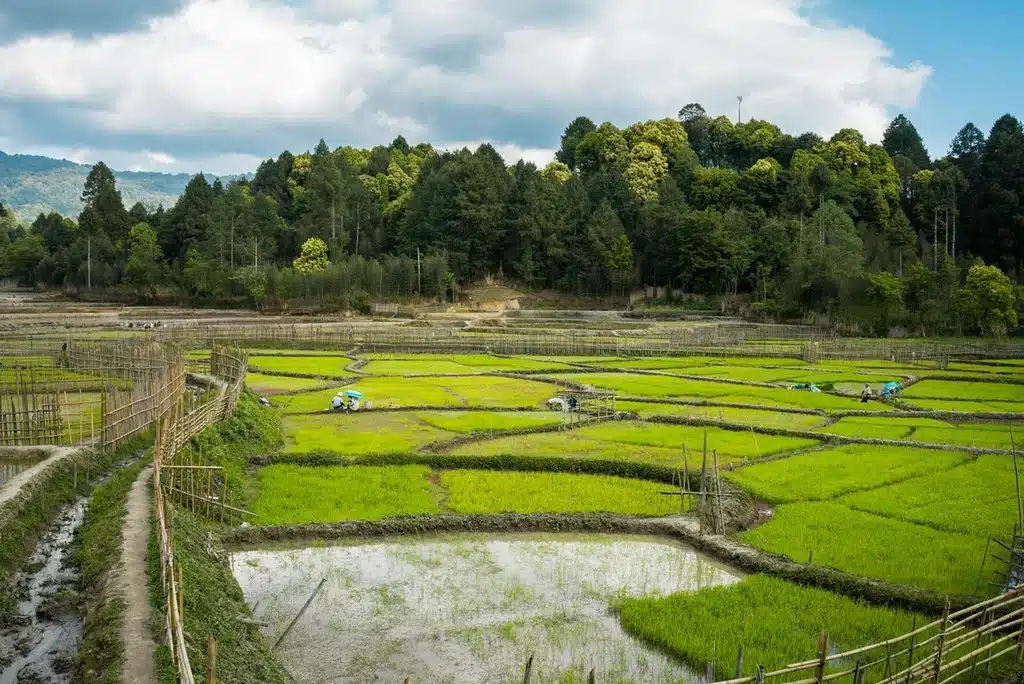
Nestled in the Northeast region of India, home to approximately 39 million people across over 100 tribal groups, Arunachal Pradesh stands out as a vibrant mosaic of diverse cultures and traditions. At the heart of this cultural landscape is the Apatani Valley, located in the Lower Subansiri district. Situated between the Panior and Kamla rivers at an altitude of 1524 meters, the valley is renowned for its picturesque setting of terraced paddy fields.
Historically, the valley was composed of seven large villages—Hong, Biila, Dutta, Hija, Hari, Mudang-Tage, and Michi-Bamin—which collectively housed about 25,000 people. The Apatani tribe, known for their progressive agricultural practices and sophisticated land management techniques, has made a significant mark in the region. Approximately 48.38% of their land is dedicated to an innovative paddy-cum-fish cultivation system. Additionally, 32.64% of the land is maintained as clan forest, 16.41% as bamboo forest, and 2.75% as home gardens. This advanced approach to agriculture, developed over centuries, positions the Apatani tribe as one of the more advanced tribal societies in Northeast India.
Living with the Apatanis – A journey into tradition and warmth
Upon reaching the homestay, I was warmly greeted by Mr. Lobsang, a friendly host who introduced me to his energetic three-year-old son, Tashi. After settling in, I was offered a glass of apong, a local rice beer, as Tashi merrily played around me.
Just then, Mr Lobsang’s mother entered, returning from a long day in the fields, a large cane basket strapped to her back and an Apatani nose plug prominently displayed between her nostrils, which, along with her beautiful smile, immediately caught my eye. We exchanged warm smiles and nods as she joined us by the fire. Curiosity getting the better of me, I turned to Mr. Lobsang and asked, “Why do Apatani women wear nose plugs?”
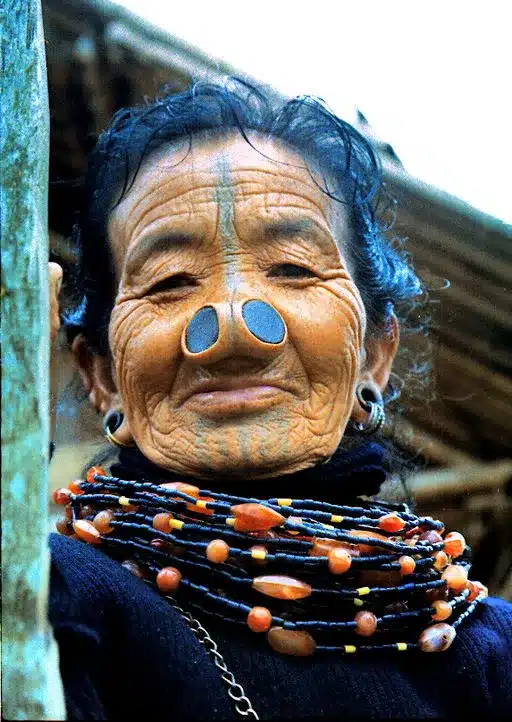
The significance of nose plugs and face tattoos among Apatani women
Mr. Lobsang explained that the women of the Apatani tribe wear large nose plugs and face tattoos, not for aesthetic enhancement as many might assume, but rather as a mark of identity within the tribe. Contrary to the typical use of adornments to enhance beauty, Apatani women use these modifications to “cover” their beauty. The nose plugs, known as Yaping Hullo, make their noses appear larger, and the face tattoos, called Tippei, are distinctive marks of their heritage.
Apatani nose plugs and the tale of abduction
He shared a fascinating legend: the women of the tribe were historically so beautiful that men from neighbouring tribes would often try to kidnap them. Additionally, the Apatani were renowned for their agricultural skills, making their villages frequent targets for raids. To protect their women from abduction, it’s said that the tribe’s elders decided to tattoo the women’s faces and insert wooden nose plugs to make them less appealing to invaders. Another version suggests that the women chose to adopt these modifications themselves for their protection.
The process of inserting these nose plugs involves using specially cleaned wood from the forest to avoid infections. The face tattoos are typically administered by elder women when Apatani girls reach about ten years old, using a mix of pig’s fat and soot from the fireplace.
This tradition, passed down through generations, was a symbol of honour and a means of protecting family dignity. However, by the early 1970s, the government banned the practice of nose plugs and face tattoos, as they began to pose social and economic hindrances, particularly for women seeking employment in cities. Since then, the tradition has nearly vanished, with mostly older women continuing to embrace these symbols of their identity, proud of their heritage and the unique aspects of being Apatani.
The Apatanis – A journey through time from Tibeto-China to Northeast India
After hearing about the intriguing customs of the Apatani tribe from Mr. Lobsang, I retreated to my room, eager to delve deeper into their history. Despite the spotty network connectivity, I managed to gather some fascinating details. The origins of the Apatani tribe can be traced back to Mudo Suppung, which is in modern-day Tibeto-China. They speak a local language called Tani and it is believed that they migrated from this region and eventually settled in the Ziro Valley of the eastern Himalayas. In fact, the Apatani were the first tribe in quite a while to meet the British in the twelfth hundred years, and numerous texts mirror their expansion and culture over the long haul.
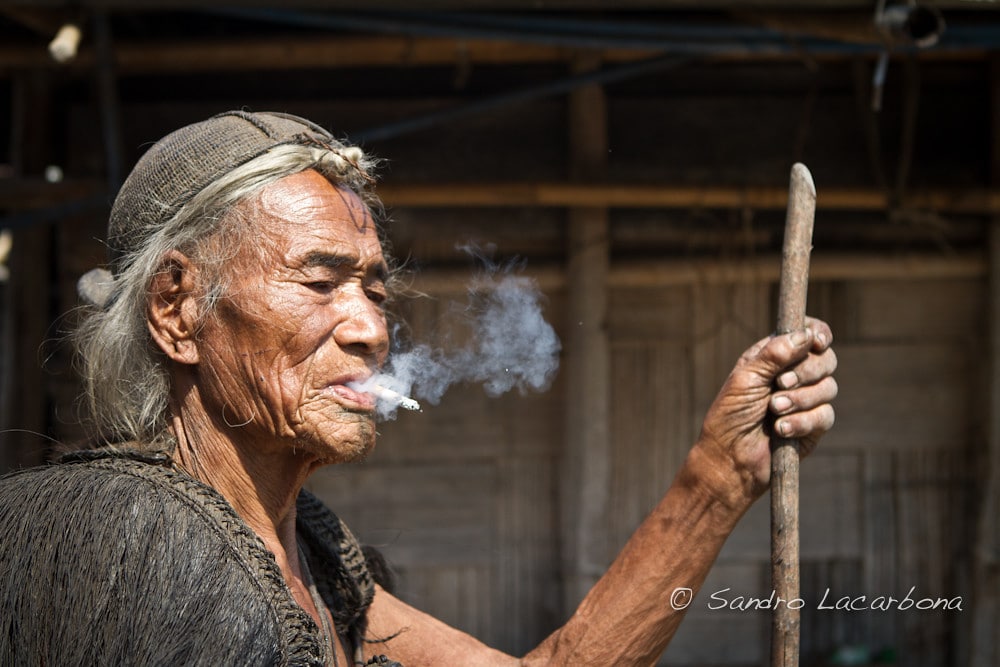
Their rich history is largely preserved and passed down through oral traditions—folklore and tales that have been shared from one generation to the next. These stories not only highlight the tribe’s journey and settlement but also imbue their current customs and practices with deeper meaning and context.
Living under the Sun and Moon – The continuity of Apatani religion in modern times
I learned about the primary religion of the region, known as Danyi-Pilo, which translates to “the sun and the moon.” These celestial bodies are revered as the sustainers of all life. Interestingly, this belief system doesn’t involve temples or conventional religious practices. Instead, the people express their gratitude through biannual festivals aligned with the agricultural cycles of planting and harvest. The pre-spring festival is particularly notable; it lasts an entire month with different villages hosting the celebrations in rotation. During this time, the host village welcomes everyone day and night for feasting and fellowship, strengthening communal bonds that persist long after the festivities end.
While many have embraced Christianity, moving away from traditional symbols, attire, and practices, it’s still common to see the tribe’s distinctive tattoos and pierced noses among the older generation, regardless of their current religious affiliations. Additionally, certain ancient practices endure, such as the sacred cultivation of bamboo groves outside each settlement and the regular planting of trees in the forests, both of which are revered by the tribe.
A taste of Apatani Valley – From grasshopper chutney to local delicacies
After spending some time immersed in research, Mr. Lobsang invited me downstairs for lunch, where I noticed a kitchen garden just outside their home. He explained that most households here maintain one, integrating fresh greens and vegetables into their daily meals. The traditional diet of Ziro’s older residents typically consists of rice, boiled greens, and boiled meat or fish—primarily pork and fish, which are staples in Apatani cuisine.
What caught my attention, however, was the unique practice of serving salt separately in a bowl, rather than cooking with it. Each bite is seasoned individually. I learned that this method likely developed from historical salt shortages, with locals making their own salt from shrub leaves to fulfil their iodine needs. The use of green chilli and ginger is prolific, adding vibrant flavours to their dishes. Meanwhile, the younger generation has gravitated towards richer, spicier foods, reflecting outside culinary influences.
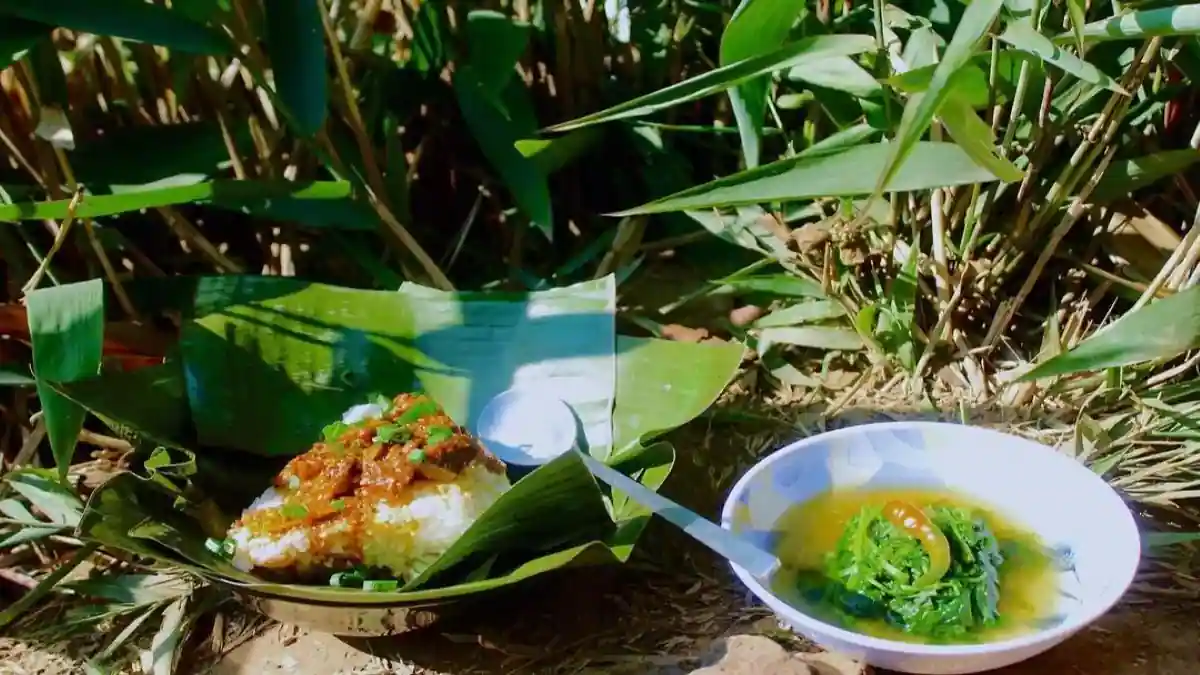
For lunch, I was served rice with pork and pehak—a chutney made from fermented soybean and chili. There was also Pika pila, a well-known local pickle, and intriguingly, a bowl of boiled grasshopper chutney. Initially hesitant, I decided to try it, encouraged by Mr. Lobsang’s mother, who proudly mentioned it was freshly caught from the fields today.
Mr. Lobsang mentioned that the local cuisine might be quite an adventure for tourists, featuring not only pork and chicken but also more exotic choices like dog, rat, and cat. He described the rats as large and “juicy,” often displayed alongside vegetables in markets in old Ziro, where catching them is considered a valued skill. The meal was delightful, and for those looking to embrace local flavors fully, the grasshopper chutney is a must-try.
Fields of innovation – Sustainable agriculture with the Apatani Tribe
After lunch, Mr. Lobsang and his son took me for a walk through the expansive paddy fields that characterize Ziro. As we strolled, Mr. Lobsang explained the unique agricultural practices of the Apatanis. They engage in an integrated rice-fish cultivation method, an eco-friendly approach well-suited to the humid subtropical to the temperate climate of the Apatani Plateau. This area benefits from abundant rainfall during the summer, which, along with the clayey, loamy soil, supports this sustainable farming technique.
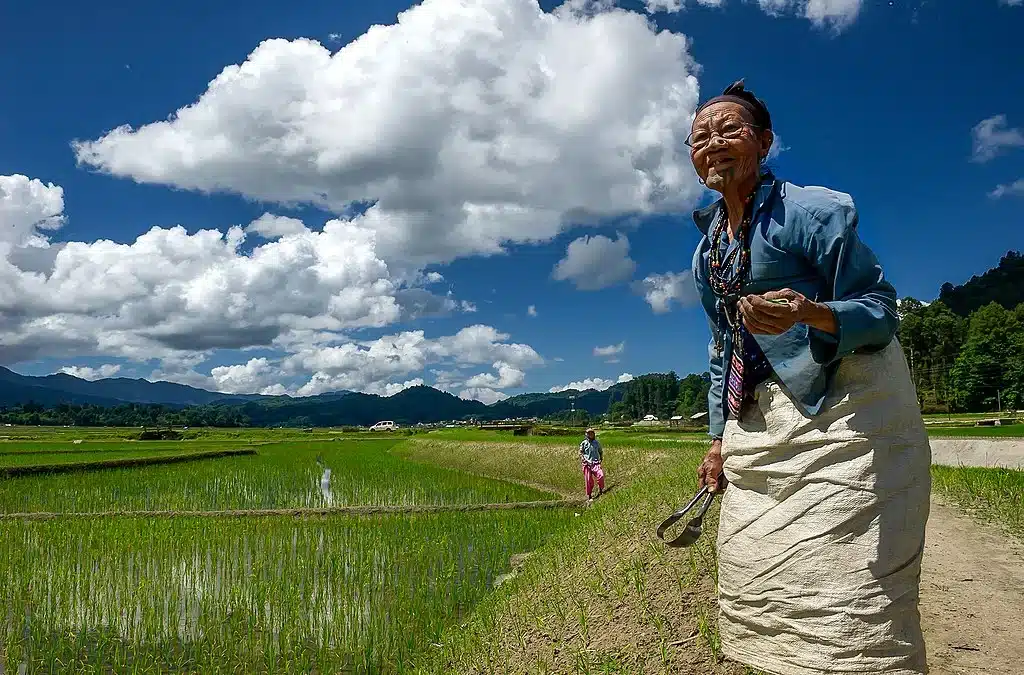
The fields aren’t just for growing rice; they also serve as fish ponds. Shortly after rice is transplanted, three strains of common carp are introduced. These fish thrive on the natural food sources within the paddy fields, reducing the need for additional feeding. The farmers enhance the sustainability of their fields by using organic waste from household and agricultural sources, including the excreta of domestic animals like pigs, cows, mithun (Bos frontalis), and goats. Plants like azolla and lemna are grown in the water to fix nitrogen, further enriching the ecosystem.
Water management is cleverly handled using networks of earthen irrigation channels fitted with bamboo pipes. These channels are designed with dual outlets: one set at an upper angle to maintain water levels and another at the base for draining during harvests.
Apatani farming and the path to UNESCO recognition
In this labor-intensive process, men and women have distinct roles; women, in particular, are heavily involved in fish cultivation. The community relies on traditional tools and methods, as modern machinery like tractors and power tillers are both unaffordable and impractical due to the terrain. The fields are meticulously prepared, with rice plants spaced about 26 cm apart to ensure optimal growth.
This method of dual cropping—rice and fish—illustrates why the Apatani are regarded as one of the most advanced tribal communities in Northeast India. Their deep understanding of land, forest, and water management contributes to a robust economy and a rich tradition of ecological sustainability. This exceptional model of farming and ecological wisdom has put the Apatani Plateau on track to be recognized as a UNESCO World Heritage site, celebrating its unique contribution to sustainable agriculture and cultural heritage.
Together as one – The Apatani’s festivals and communal resilience
Observing the villagers, one thing that stood out was their unyielding camaraderie and the ever-present smiles, despite the hard work that filled their days. The Apatani tribe community embodies a remarkable spirit of unity and support, a quality Mr. Lobsang highlighted through a touching story. He recounted how, a few years ago, a devastating fire swept through one of their villages. In response, residents from neighbouring villages united to reconstruct the entire village within a mere day.
Dree festival magic – A window into Apatani community spirit
This strong sense of community is also beautifully showcased during their festivals, particularly the Dree Festival, which is the primary agricultural celebration of the Apatani tribe. Celebrated annually on July 5th, Dree is a vibrant testament to the community’s aspirations for a prosperous harvest. The festival involves offering prayers and sacrificial offerings to four revered deities: Tamu, Harniang, Metii, and Danyi.
The three-day festival is a jubilant occasion filled with traditional clothing, delectable food, and lively performances. Women and children don traditional attire, adding to the festival’s colorful atmosphere. Dree is recognized as one of the most captivating festivals in Arunachal Pradesh, marked by the serving of tangy rice and millet beer and performances of traditional dances and songs by tribe members.
A distinctive feature of the Dree Festival is the distribution of cucumbers to guests and participants, a gesture that symbolizes the sacredness of vegetables and conveys hopes for a bountiful agricultural yield. Alongside lively games, this fosters a strong sense of community akin to my experience with the Indo-African Siddis tribe in Karnataka. It was this spirited celebration that convinced me I must return to Arunachal to experience the festival firsthand during my next visit.
From leaf to loom – The eco-friendly textiles of the Apatani
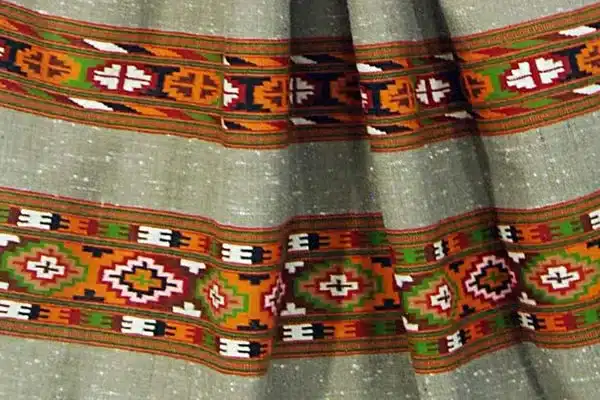
While exploring the rich culture of the Apatani tribe, I observed the distinctive fabrics worn by the women. Mr. Lobsang explained that their textile production is intertwined with a sustainable social forestry system, utilizing leaves and plant-based resources for natural dyeing. This traditional method is used to create vibrant yarns for textiles, which are then woven into garments for weddings, rituals, and cultural festivals like Dree and Myoko. The primary production of Apatani fabric, known for its intricate designs, occurs in Ziro. They typically craft shawls known as ‘jig-jagro’ or ‘jilan’ and jackets called ‘supuntarii.’
Creation of the Fabric
The process begins with cotton, locally referred to as ’empya,’ which is plentiful in their region. The first step in textile production is ginning, where raw cotton fibers are separated from the seeds using a thin stick called a lekho. The fibers are then shaped into balls using a tafo, a spindle that twists the fibers into yarn. A traditional wooden frame made of bamboo, known as hornanii, is used to create loops in the yarn.
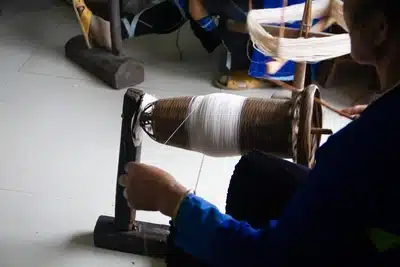
At this stage, dyes are introduced. The Apatani tribe utilize vegetable-based dyes derived from plants like tamin, which yields a red-orange hue, and sankhii, which gives a brown-yellow color. Once dyed, the yarn is wound into balls with a spinning wheel called piirii-e, preparing it for weaving.
Weaving is done on a back-strap tension loom, primarily using a simple set of tools including bamboo and wooden sticks that form a framework. The process starts with setting up a warp, stretching the yarn between two parallel bamboo sticks. This warp is manipulated over and under the bamboo to create the foundation for weaving. The weft is then interlaced through the warp using a bamboo tube shuttle known as lokho. A round stick called gochi nanii is positioned beneath the warp to support the growing fabric. This meticulous process highlights the Apatani’s deep connection to their land and traditions, reflecting their commitment to sustainability and cultural preservation.
Ziro’s hidden gems – A traveler’s guide to its best-kept secrets
After exploring the fishing farm and the textile-making store, my Savaari cab, driven by Tsering, took me on a tour around Ziro. Tsering, well-versed in the area, knew exactly the best spots to visit. You can refer to this handy travel guide on Ziro which helped me immensely during my exploration. Here are my top recommendations for anyone visiting Ziro:
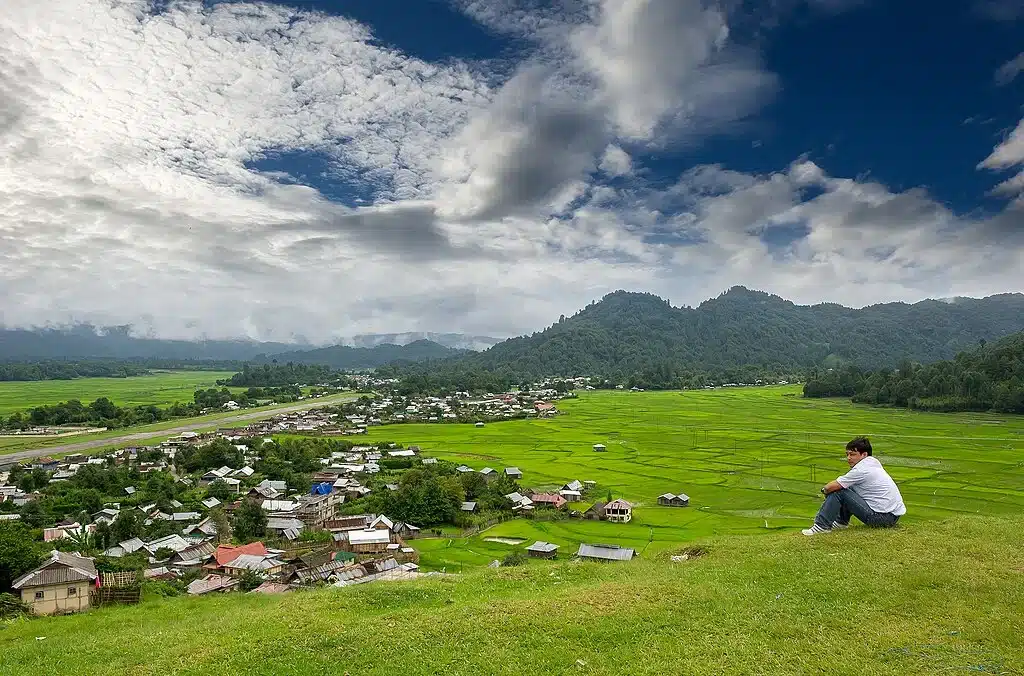
Talley Valley Wildlife Sanctuary: Spanning 337 km², this sanctuary is a major attraction in Ziro, housing several endangered species. With minimal human interference, it boasts a rich biodiversity including white firs, orchids, bamboo, and ferns, making it a vital biodiversity area.
Meghna Cave Temple: A must-visit spot, this ancient rock temple, rediscovered in 1962, dates back 5,000 years. Situated at an elevation of 300 feet, it offers panoramic views of majestic mountains, lush forests, and a serene river below.
Hapoli Market: Located in Hapoli, the administrative heart of the Lower Subansiri district, this market’s name derives from “HaoPolyang”, meaning “high plain” in Apatani. It’s a hub of local activity and culture.
Tarin Fish Farm: Located in the village of Bulla, this farm showcases the Apatani practice of integrated rice and fish farming, growing two rice crops and a breed of fish together.
Dolo Mando: Situated on a hill to the west of Ziro along the Daporijo road, Dolo Mando is ideal for trekking enthusiasts, offering stunning views and a tranquil escape.
Bamboo Grove: Known for its unique “monopodial” bamboo and tall blue pines, Bamboo Grove is popular for trekking and hiking.
Puto Ziro: Historically significant, Puto is a mound where India’s first administrative center was set up post-independence. It later became an army township in 1960, offering a fantastic aerial view of the entire Apatani plateau.
Reflections from Ziro – Culture and the call of the wild
Reflecting on my journey with the Apatani Tribe, I realize how profoundly it has reshaped my perspective. The Apatani people are more than just a tribe known for their distinctive nose plugs and face tattoos; they embody resilience and self-sufficiency. After spending a day at the homestay, experiencing the incredible hospitality of my hosts who radiated warmth and friendliness, I found myself deeply immersed in the vibrancy of the Ziro festival. While I initially thought the festival would be the pinnacle of my trip, I was pleasantly mistaken. Although the festival was indeed spectacular, my interactions with the Apatani tribe emerged as the true highlight, leaving a lasting impression on me and a fervent desire to return.
As Tsering and I drove back down to Dibrugarh, the serene sight of mithuns grazing along the highway captivated us. These local bison, typically shy and nocturnal, mirrored a part of my own essence. Much like the mithun that ventures out into the quiet of night, I find myself most alive in the tranquil hours after sunset, viewing the world from a perspective that often goes unnoticed. This journey not only connected me with the unique culture of the Apatanis but also deepened my connection with nature and the quieter, unseen moments of life.
How does one visit and learn from the Apatanis firsthand?
Known for their friendly nature in contrast to neighbouring tribes, the Apatani tribe offer a window into one of India’s most captivating communities. Staying in local homestays provides a unique opportunity to learn about their way of life, with village elders adorned in traditional tattoos serving as reminders of bygone eras. Besides cultural exchanges, exploring the surrounding mountains through short hikes amidst bamboo and pine forests offers a perfect weekend getaway, complete with serene landscapes and warm hospitality. However, it’s crucial to approach it with respect.
How to reach Ziro
By Road:
Opt for a Savaari taxi from Dibrugarh, Guwahati or Jorhat (approx. 470 Km), a 7-hour journey via NH27 & NH15 with good road conditions. Government buses are also available.
By Rail:
Catch daily trains from Guwahati to Kathal Pukhuri (INR 750-1100), an 8-hour trip. From Kathal Pukhuri, hire a taxi to Ziro. Trains are also accessible from Tezpur.
By Air:
Tezpur airport, 280 km from Ziro, is the closest. Although no direct flights from Delhi or Kolkata are available, most flights connect via Guwahati. Hire a Guwahati airport taxi to Ziro and continue exploring the valley.
For all domestic travellers, an Innerline Permit is a must if you want to travel to Arunachal Pradesh. The Inner Line Permit can be obtained from the Resident Tourism Office, Guwahati International Airport, Assam Paryatan Building in Guwahati, Arunachal Bhawan at Delhi, Arunachal Bhawan at Kolkata, or Naharlagun Railway Station for a fee of 200. You’ll also need to submit 2 photographs and furnish proof of identity.
Experiencing these wonders yourself is easy with the Savaari car rental app, where a knowledgeable chauffeur ensures a comfortable journey filled with local insights and leads you to remarkable destinations. Embark on your own adventure and discover the hidden gems that await on the road less travelled.
Last Updated on May 3, 2024 by Shabari Shankar



